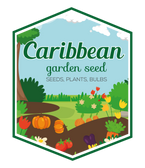
Mountain Mint,Herb Seeds - Pycnanthemum pilosum
- Get free shipping to lower 48 states on orders $54.95+ (Most Items), excluding live plants, plant bulbs, and black plastic nursery crate.
- Most orders are processed by the next day !
- Safe Seed Pledge
- Select your desired size and/or color from the available options.
Pycnanthemum pilosum 'Mountain Mint' American Mountain Mint.
This American native is an attractive plant that will be equally at home in your flower border or keeping company with the sage and thyme in your herb garden. Mountain mints bloom throughout summer until first frosts. The flowers are arranged in round, flat, tight clusters at the top of the plant.
The 12mm (½in) long flowers are whitish or pale lavender, the lower lip spotted with purple. Like their close cousins the Monardas, they often develop white pigments in the leaves. The silver-velvety bracts that frame the flower clusters are especially decorative. Delightfully aromatic, the floral-peppermint scent is subtly different from other mints.
Use in potpourri, incense, and as an ingredient in natural insect pest repellent formulas. Mountain mint is edible and excellent in salads. Raw or cooked the flower buds and leaves have a spicy, mint-like flavour that makes a great spice or seasoning for meat.
The fresh or dried leaves are brewed into a delicious mint-like tea. Valued for their ability to attract bees, butterflies and other beneficial insects, from morning until evening these plants are alive with the dance of the pollinators. Mountain mint is a great nectar plant and its honey is much sought after.Seeds can also be sown directly outdoors in April or May, but in a garden situation you may wish to contain the plant. While not nearly as invasive as true mint varieties, Mountain Mint will spread. While some gardeners enjoy growing a plant that increases in size each year, in some situations, you may need to pull up the new shoots each year to curtail any wandering tendencies. You may choose to plant in a container or in a pot sunk into the ground to restrict the roots.
Sowing: Sow in Spring, Feb to May or in Autumn, Sept to Oct.
Sow seed thinly on the surface of lightly firmed, moistened seed compost in pots or trays. (fine seed, so best done by using seedspoons or adding the seed to a small amount of sand). Press the seeds lightly into the compost. Keep moist and out of the sun, watering from below. Easy to germinate, usually 14 to 21 days at 20°C (68°F)
Resist the urge to prick out or transplant until seedlings have 4 or 5 true leaves. Transplant seedlings into 15cm (6in) pots to grow on.
Gradually acclimatise to outdoor conditions for 10 to 15 days before planting out after all risk of frost. Place in full sun or part shade and plant 30cm (12in) apart or in 30cm 12in containers. Pinch out the tip of the main stem to encourage bushy growth
Cultivation:
The preference is full or partial sun and moist to slightly dry conditions. They donât need rich soil, but try to keep the soil lightly moist through the first half of summer. (Established plants are very tolerant of late-summer drought.) Division in spring.
Harvesting:
Pick the leaves as required. Gather tops and leaves when flowers bloom and dry for later herb use. Best used fresh but dry very well for those pick-me-up winter teas.
Culinary uses:
Mountain-mint is edible and medicinal, use raw or cooked, the flower buds and leaves have a spicy, mint-like flavour that makes a great spice or seasoning for meat.
Medicinal Uses:
The fresh or dried leaves are brewed into a refreshing mint-like medicinal herb tea that is alterative (for that run down feeling), analgesic, antiseptic, diaphoretic, carminative, emmenagogue and tonic. The tea is used in alternative medicine in the treatment of indigestion, mouth sores and gum disease, colic, coughs, colds, chills and fevers. A strong decoction is medicinal poured over wounds. Crushed flowers are placed on tooth ache and almost instantly kills pain.
Very aromatic, the herb is used in potpourri or burned as incense. Placed in a muslin bag it can be used as bath additive, and is said to be very soothing to irritated skin.
It will freshen laundry when used in the dryer. Thrown in a drawer or trunk it will not only freshen clothing and blankets, but keep moths away. Sprinkle on carpets to freshen the whole house
Natural Insecticide:
Many people grow mountain mint for use as an insect repellent. Crushed flowers are rubbed on clothing repel insects. Rub a handful of this herb on your pants or use a fresh wad of mountain mintâs bruised stems, stuck into your pocket or hat, to help keep gnats from buzzing your face when youâre outdoors.
Materials: All parts of this herb are a,romatic,cooking,spicy sauce cooking
LET OUR CUSTOMER SPEAK FOR US

![[Seeds] - Caribbeangardenseed](http://caribbeangardenseed.com/cdn/shop/files/gift-card-gift-card-1_1024x1024_dfa857db-9150-4315-a362-7f0bb3fb9c47_60x28.png?v=1722895789)







